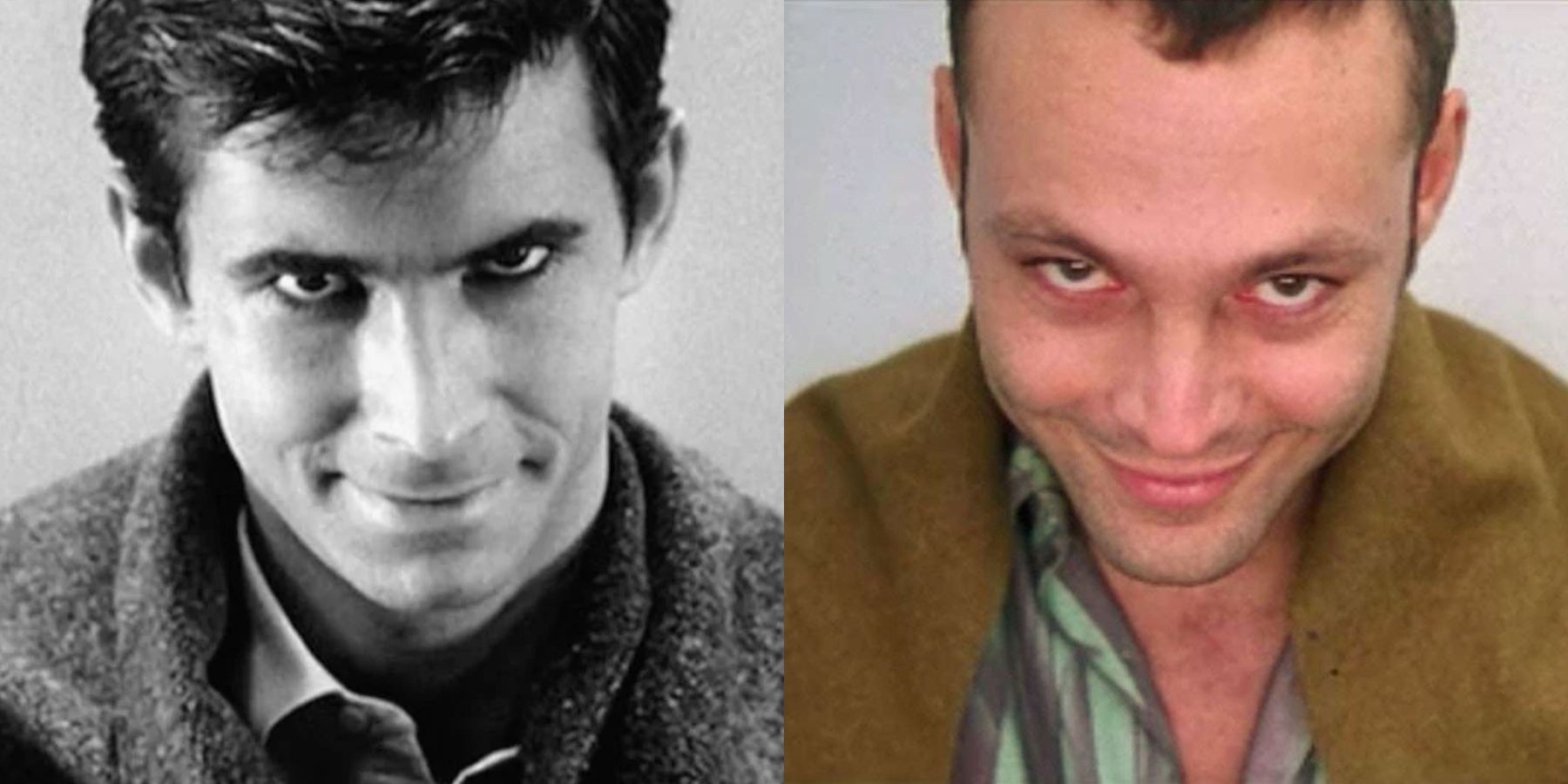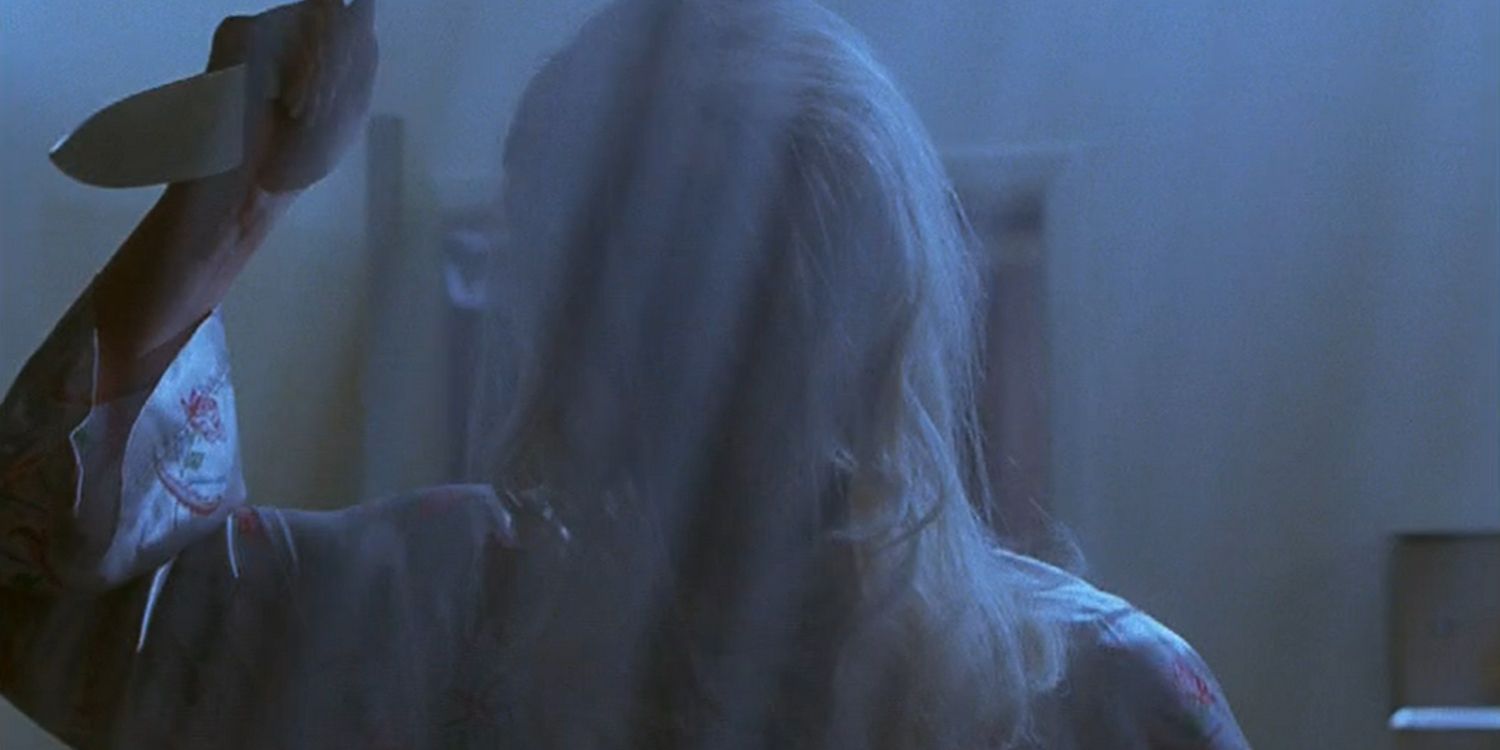
Remakes can do one of two things: stay nearly identical to the original or completely stray away and create something entirely different. Many times, remakes end up being tossed away and thought of as nothing but an unnecessary recreation of something that didn’t need to be updated.
Gus Van Sant’s Psycho (1998) is infamous for basically recreating the 1960 Alfred Hitchcock original, by doing an indistinguishable shot-for-shot remake. The film is also notorious for, to put it simply, being a terrible movie. Is Gus Van Sant’s Psycho as bad as audiences and critics actually say though, or is it just another case of a pointless remake?
RELATED: Horror Movies Need A New Iconic Slasher Villain
Alfred Hitchcock’s Psycho is often considered one of the best horror movies of all time, still extremely popular 6 decades later. The film is noted for being one of the first slasher films with an attention-grabbing plot: A woman named Marion Crane (Janet Leigh) is on the run after stealing $40,000, and ends up having to stay at the now-iconic Bates Motel due to a heavy rainstorm.

The famous scene in which Crane is stabbed to death in the hotel shower is perhaps the most famous scene in horror film history. The film was a huge hit for critics and fans alike, and Janet Leigh is still considered one of the best scream queens in the history of cinema (next to her daughter Jamie Lee Curtis). When Van Sant’s Psycho was released though, it didn’t have even close to the success of the original.
In 2021, it seems that every other movie that is released is a remake, but in the 90s, this was a bit of a more fresh take. When the remake was first announced, the anticipation was high due to the fact that it featured a pretty star-studded cast, including Vince Vaughn as Norman Bates, Anne Heche as Marion Crane, Julianne Moore as Lila Crane (Marion’s sister), Viggo Mortensen as Sam Loomis (Marion’s boyfriend), and Rita Wilson as Caroline, who is Marion’s co-worker.
When Psycho was released in 1998 though, critics absolutely tore the film apart. The most well-known critics had almost nothing good to say, with critic Roger Ebert calling the film an “invaluable experiment” and stating that it was completely pointless in every way possible. Although this film is insignificant to most film buffs mainly for being shot-for-shot, the remake does take some different stances that make the film more distinctive as a movie that can stand on its own.

One thing that Van Sant’s Psycho does that is unique to the original is his shooting style. Although many of the scenes are identical to the original, there are also scenes that are changed through having original camera positions. Van Sant uses slightly closer camera angles as opposed to the medium shots used in the 1960 version.
Although it may seem like just a subtle difference, the closer shots create a more sympathetic feeling towards Norman. Using closer camera shots is used to alter the audience’s perception of the characters. In the original, Marion appeared cold and distant, and the way the camera angles were far away from her adds to that. In the remake though, the closer shots give a more personal and intimate relationship between Marion and the viewer.
The same can be said for Norman, especially in the scene when Marion suggests that they eat in her room as opposed to the office. The shot is of Norman from Marion’s perspective, then quickly switches back to his perspective. In the original, this entire scene is one medium shot of the characters, but in the remake, the camera is focusing on Norman stepping closer towards the screen, giving a more intimate point of view.
Another way that Van Sant’s Psycho differentiates from the original is the way the film highlights the modernization of the 1990s. The colors in Psycho are very noticeable, which was a common theme in 90s movies. Many note 90s films for having some of the most aesthetically pleasing color palettes; honorable mentions include Edward Scissorhands (1990), Pulp Fiction (1994), The Professional (1994), and American Beauty (1999), as according to Esquire.
Using color to give a message across in films and tv is very normalized now, but in the 90s, this was newer territory. Psycho often has Marion Crane in over-the-top orange, pink and green-colored outfits, with bright and tacky nail polish. Along with her colorful outfits, Marion’s house and bathroom are splattered in different shades of pink, a very bright and vibrant color, contrasting with the dark fate of the movie. Norman Bates is shown mainly in dark-colored suits, with the occasional splash of color, foreshadowing his dark persona. Although Norman has darker outfits, the 90s still shine through with his colorful shirts that have strikingly clashing patterns.

The film is modernized in other ways as well, by the subtle ways it highlights how much time has passed since the original. For example, the $40,000 that Marion stole is upped to $400,000 and the psychologist’s ending speech doesn’t have any of the outdated references of the original. The film is also modernized by having more hyper-sexualized scenes.
Some may see the modern take on a classic as genius, similar to how Baz Luhrmann did with his post-modern remake of Romeo & Juliet (1996), while others see it as pointless. In many ways, Psycho just didn’t translate well in a more modern setting in the way that Romeo & Juliet did. There are a few reasons for this, one being that the plot wouldn’t make sense in the 90s.
A huge plot point surrounds Marion’s premarital affair with Sam, which was a completely outdated topic when Van Sant made the film. The whole reason Marion stole the money in the first place was that she felt like she needed to get married, something that women felt more pressured to do in the 1950s as opposed to the 1990s.
When asked about Psycho, Van Sant realized that the film didn’t do well, but he does believe it was important to make. When interviewed on The WTF podcast by Marc Maron, Van Sant stated, “So it didn’t work. But the idea was whether or not you could remake something and it would repeat the box office. That was a sort of weird science experiment… It’s more important now I think, because people like yourself will ask questions about it. It’s more alive now than it was back when it failed, just with the art world or the modern world.” The mere fact that this 1998 remake is still being discussed is a testament to Van Sant’s position.
MORE: This Forgotten Horror Genre Needs A 21st Century Comeback

